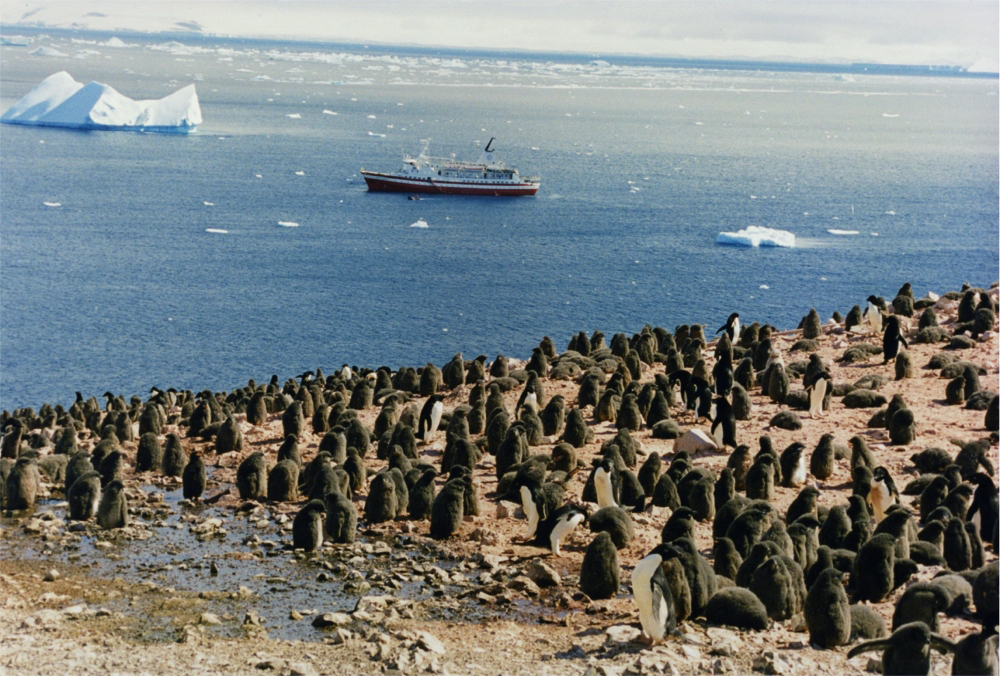|
Pygoscelis
The genus ''Pygoscelis'' ("rump-legged") contains three living species of penguins collectively known as "brush-tailed penguins". Taxonomy Mitochondrial and nuclear DNA evidence suggests the genus split from other penguins around 38 million years ago, about 2 million years after the ancestors of the genus '' Aptenodytes''. In turn, the Adelie penguins split off from the other members of the genus around 19 million years ago. ;Extant species A 2020 study found that the gentoo penguin may actually comprise a species complex of 4 similar but genetically distinct species: the northern gentoo penguin (''P. papua''), the southern gentoo penguin (''P. ellsworthi''), the eastern gentoo penguin (''P. taeniata''), and the newly-described South Georgia gentoo penguin (''P. poncetii''). However, in 2021 the International Ornithological Congress recognized these as being subspecies of ''P. papua''. A study has estimated that there are about 3.79 million pairs of Adélie, 387,000 pai ... [...More Info...] [...Related Items...] OR: [Wikipedia] [Google] [Baidu] |
Gentoo Penguin
The gentoo penguin ( ) (''Pygoscelis papua'') is a penguin species (or possibly a species complex) in the genus '' Pygoscelis'', most closely related to the Adélie penguin (''P. adeliae'') and the chinstrap penguin (''P. antarcticus''). The earliest scientific description was made in 1781 by Johann Reinhold Forster with a type locality in the Falkland Islands. The species calls in a variety of ways, but the most frequently heard is a loud trumpeting, which the bird emits with its head thrown back. Names The application of "gentoo" to the penguin is unclear. '' Gentoo'' was an Anglo-Indian term to distinguish Hindus from Muslims. The English term may have originated from the Portuguese ''gentio'' ("pagan, gentile"). Some speculate that the white patch on the bird's head was thought to resemble a turban. It may also be a variation of another name for this bird, "Johnny penguin", with Johnny being in Spanish and sounds vaguely like gentoo. The Johnny rook, a predator, is like ... [...More Info...] [...Related Items...] OR: [Wikipedia] [Google] [Baidu] |
Pygoscelis Papua
The gentoo penguin ( ) (''Pygoscelis papua'') is a penguin species (or possibly a species complex) in the genus ''Pygoscelis'', most closely related to the Adélie penguin (''P. adeliae'') and the chinstrap penguin (''P. antarcticus''). The earliest scientific description was made in 1781 by Johann Reinhold Forster with a type locality in the Falkland Islands. The species calls in a variety of ways, but the most frequently heard is a loud trumpeting, which the bird emits with its head thrown back. Names The application of "gentoo" to the penguin is unclear. '' Gentoo'' was an Anglo-Indian term to distinguish Hindus from Muslims. The English term may have originated from the Portuguese ''gentio'' ("pagan, gentile"). Some speculate that the white patch on the bird's head was thought to resemble a turban. It may also be a variation of another name for this bird, "Johnny penguin", with Johnny being in Spanish and sounds vaguely like gentoo. The Johnny rook, a predator, is likely ... [...More Info...] [...Related Items...] OR: [Wikipedia] [Google] [Baidu] |
Pygoscelis
The genus ''Pygoscelis'' ("rump-legged") contains three living species of penguins collectively known as "brush-tailed penguins". Taxonomy Mitochondrial and nuclear DNA evidence suggests the genus split from other penguins around 38 million years ago, about 2 million years after the ancestors of the genus '' Aptenodytes''. In turn, the Adelie penguins split off from the other members of the genus around 19 million years ago. ;Extant species A 2020 study found that the gentoo penguin may actually comprise a species complex of 4 similar but genetically distinct species: the northern gentoo penguin (''P. papua''), the southern gentoo penguin (''P. ellsworthi''), the eastern gentoo penguin (''P. taeniata''), and the newly-described South Georgia gentoo penguin (''P. poncetii''). However, in 2021 the International Ornithological Congress recognized these as being subspecies of ''P. papua''. A study has estimated that there are about 3.79 million pairs of Adélie, 387,000 pai ... [...More Info...] [...Related Items...] OR: [Wikipedia] [Google] [Baidu] |
Adélie Penguin
The Adélie penguin (''Pygoscelis adeliae'') is a species of penguin common along the entire coast of the Antarctic continent, which is the only place where it is found. It is the most widespread penguin species, and, along with the emperor penguin, is the most southerly distributed of all penguins. It is named after Adélie Land, in turn named for Adèle Dumont d'Urville, who was married to French explorer Jules Dumont d'Urville, who first discovered this penguin in 1840. Adélie penguins obtain their food by both predation and foraging, with a diet of mainly krill and fish. Taxonomy and systematics The first Adélie penguin specimens were collected by crew members of French explorer Jules Dumont d'Urville on his expedition to Antarctica in the late 1830s and early 1840s. Jacques Bernard Hombron and Honoré Jacquinot, two French surgeons who doubled as naturalists on the journey, described the bird for science in 1841, giving it the scientific name ''Catarrhactes adeli� ... [...More Info...] [...Related Items...] OR: [Wikipedia] [Google] [Baidu] |
Penguin
Penguins ( order Sphenisciformes , family Spheniscidae ) are a group of aquatic flightless birds. They live almost exclusively in the Southern Hemisphere: only one species, the Galápagos penguin, is found north of the Equator. Highly adapted for life in the water, penguins have countershaded dark and white plumage and flippers for swimming. Most penguins feed on krill, fish, squid and other forms of sea life which they catch with their bills and swallow it whole while swimming. A penguin has a spiny tongue and powerful jaws to grip slippery prey. They spend roughly half of their lives on land and the other half in the sea. The largest living species is the emperor penguin (''Aptenodytes forsteri''): on average, adults are about tall and weigh . The smallest penguin species is the little blue penguin (''Eudyptula minor''), also known as the fairy penguin, which stands around tall and weighs . Today, larger penguins generally inhabit colder regions, and smaller penguins in ... [...More Info...] [...Related Items...] OR: [Wikipedia] [Google] [Baidu] |
Pygoscelis Tyreei ''Pygoscelis tyreei'', also referred to as Tyree's penguin, is an extinct species of penguin from New Zealand. It was slightly smaller than the extant gentoo penguin, standing 70 to 80 cm high. Of Late Pliocene age, it is known only from fossil remains collected from Motunau Beach, North Canterbury Canterbury ( mi, Waitaha) is a region of New Zealand, located in the central-eastern South Island. The region covers an area of , making it the largest region in the country by area. It is home to a population of The region in its current fo .... References Extinct birds of New Zealand Extinct penguins Pliocene birds Pygoscelis Fossil taxa described in 1972 Birds des |



